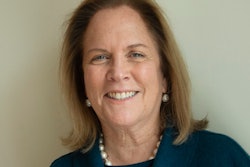In this era of anti-EDI attitudes and legislation, including book banning, I cannot help but push back and defend the importance of multicultural literature for all children. Those who are ill-informed about the purpose and benefits of multicultural literature must be challenged and enlightened; misinformation and disinformation must be corrected. Lists of high-quality characteristics have existed for decades. Two examples include: (1) Ten Quick Ways to Analyze Children's Books for Racism and Sexism by The Council on Interracial Books for Children and (2) How to Tell the Difference by Slapin and Searle. A summary from Lee and Low Books is presented with additional features, examples, and repeating questions.
 Dr. Donna Y. Ford
Dr. Donna Y. Ford
● I recall visiting a school years ago, around 2012. The library contained books dated 1950-1970 about Africa, where the people were dressed in straw skirts, riding elephants, and living in huts. No cosmopolitan photos existed with buildings, cars, and contemporary clothing. What do Black children learn about themselves? What do other children learn from such outdated, stereotypical images? How did this affect their views of Black classmates and Black people overall?
Stereotypes. Beware of both creating and/or reinforcing stereotypes. Books should reflect individual people's lives, rather than assigning general personality traits or behaviors to an entire group of people, with little to no exceptions. Several considerations are in order: (a) consider the dangers of caricaturing members of a culture; (b) consider who holds powerful positions; (c) consider the types of roles people of color have (e.g., employment and labor; caregiving). Also essential is to make sure that illustrations convey the reality that members of racial and ethnic groups are not visually homogeneous — we look different from each other.
● In books and on intelligence tests, I have challenged authors about the three aforementioned issues/considerations. For example, books had (and still do) Blacks in subordinate roles such as mopping floors while a white figure stood/looked over them. I vividly recall dark figures eating watermelons and bananas. I refuse to share the myriad appalling stereotypes these images conjure up. They are too offensive. And they beg the ongoing questions: What do Black children learn about themselves? What do other children learn from such outdated, stereotypical images? How did this affect their views of Black classmates and Black people overall?
Setting. Books must place/situate Blacks and other minoritized groups in accurate settings. Again, beware of stereotypes — distortions, over-generalizations, and misrepresentations.
● I will never forget being appalled reading an ABC book for preschoolers less than 10 years ago. A is for apple. B is for ball. E is for Eskimo. The ‘Eskimo’ was fishing in ice with an igloo in the background. First, the name is outdated. Second, fishing is not the only industry. Third, igloos are not the only and contemporary habitat. What do Inuit and Aleut children learn about themselves? What do other children learn from such outdated, stereotypical images? How did this affect their views of Inuit classmates and Inuit people overall?
















